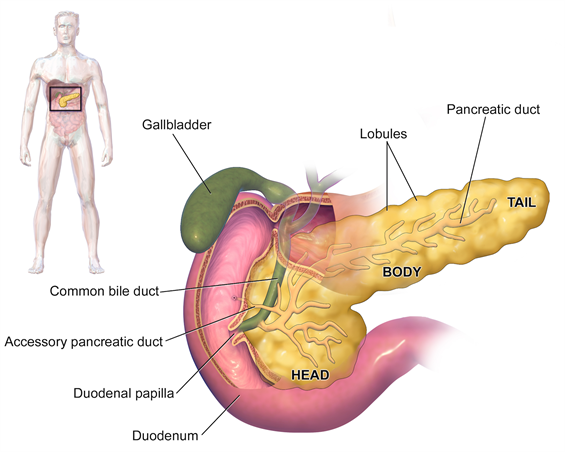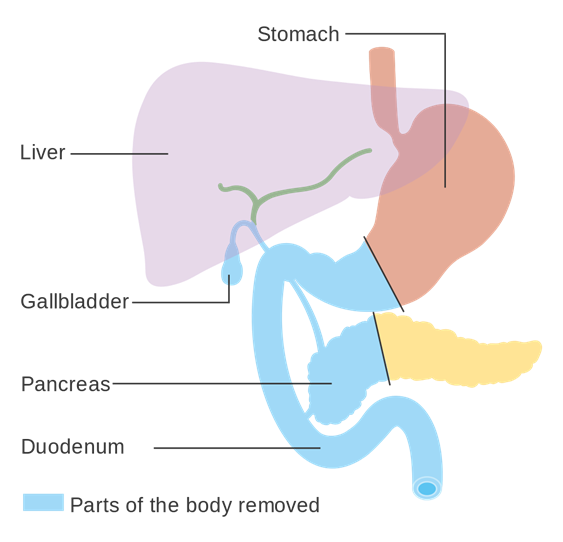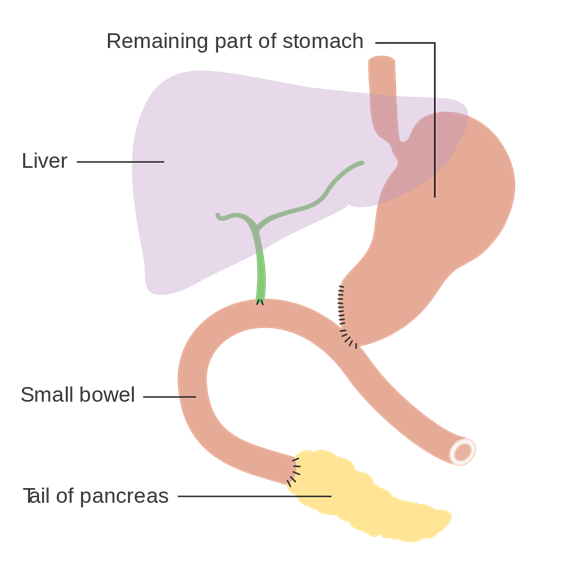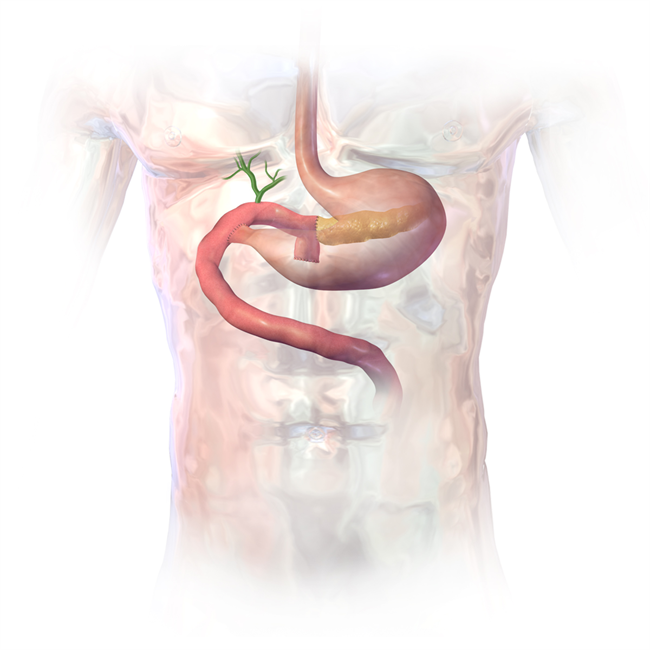Whipple Procedure (Pancreaticoduodenectomy)
The Whipple Procedure, known as a a pancreaticoduodenectomy, is performed to treat the following conditions:
- Cancer of the ampulla of Vater (Ampullary Cancer)
- Cancer of the distal (lower portion) of the bile duct
- Chronic Pancreatitis
- Duodenal cancer
- Neuroendocrine (Islet Cell) Tumors
- Pancreatic Cancer
The pancreas is an organ about the size of a hand located in the abdomen in the vicinity of the stomach, intestines, and other organs. It lies behind the stomach and in front of the spine. The pancreas has two critical functions in the body:
- The production juices that help digest food
- The production of hormones such as insulin and glucagon that maintain optimal blood sugar levels and help the body use and store energy from food.

By BruceBlaus (Own work) [CC BY-SA 4.0], via Wikimedia Commons
In the Whipple procedure, the surgeon removes cancerous parts of the pancreas, duodenum, common bile duct, and if required, portions of the stomach.

By Cancer Research UK (Original email from CRUK) [CC BY-SA 4.0], via Wikimedia Commons

By Cancer Research UK (Original email from CRUK) [CC BY-SA 4.0], via Wikimedia Commons

By BruceBlaus (Own work) [CC BY-SA 4.0], via Wikimedia Commons


